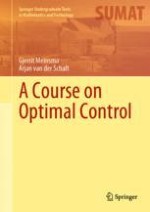2023 | OriginalPaper | Chapter
3. Dynamic Programming
Authors : Gjerrit Meinsma, Arjan van der Schaft
Published in: A Course on Optimal Control
Publisher: Springer Nature Switzerland
Activate our intelligent search to find suitable subject content or patents.
Select sections of text to find matching patents with Artificial Intelligence. powered by
Select sections of text to find additional relevant content using AI-assisted search. powered by
